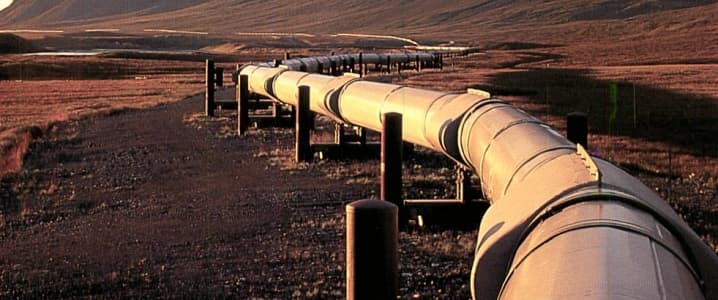Several dozen environmental groups are once again working together to stop a major oil pipeline, hoping to bring back the magic of the fight against the Keystone XL Pipeline.
A group of 31 environmental organizations sent a joint letter to the White House asking President Obama to halt construction of the Dakota Access Pipeline, a 1,168-mile oil pipeline that would connect Bakken oil to refineries in Illinois. The $3.7 billion project would carry 470,000 to 570,000 barrels per day of light sweet crude from North Dakota to be moved out of the region for processing, and it would also allow oil companies to avoid paying to ship crude by rail, a more expensive option.
But there are several problems with the route, which have raised the ire of environmentalists, local communities, and native tribes. Dakota Access moves through the ancestral land of the Standing Rock Sioux Tribe, and the tribe has mounted an energetic protest against the project, a fight that appears to be gaining steam and attracting greater national attention. The letter from environmental groups also notes that the pipeline would travel underneath the Missouri River, and an oil spill would pose a threat to the environment, to public health, and to the tribe’s way of life.
As a result, the Standing Rock Sioux Tribe has filed a lawsuit against the U.S. Army Corps of Engineers to block construction of the Dakota Access Pipeline for failing to address the tribe’s concerns and violating federal permitting law. The suit alleges that the Army Corps issued a permit under a fast-tracking permitting process, which is intended to be only used for “truly minimal environmental impacts, like boat ramps, mooring buoys, and some recreational facilities. It was not intended for massive interstate pipelines that transport hazardous fossil fuels for hundreds of miles through communities and waterways and pose grave risks of leaks, spills, and explosions,” the groups of environmental organizations wrote in the letter to the President.
The Dakota Access Pipeline, fittingly, is about the same distance as the now defunct Keystone XL project. And it appears to be following the same script, quickly emerging as a sort of Keystone XL Part 2.
There are several parallels to the Keystone XL fight. First, the opposition comes from a diverse set of organizations and communities, resembling the earlier battle against the oil sands pipeline. That is what allowed the opponents of the pipeline to claim victory: it was not just tree huggers from the coasts that opposed Keystone XL, but also local towns and cities, ranchers, farmers and native tribes. For example, while native tribes protest in North Dakota, a group of landowners in Iowa have filed a lawsuit to block construction there, although their immediate case looks like it won’t succeed. And the letter from the 31 environmental groups has brought greens onboard for the fight. People from around the country have been arriving in North Dakota to support the protests.
Dakota Access also resembles Keystone XL in the way that it began as a relatively small issue, but snowballed into a national controversy. The protests have been underway since April, but only recently became national news. The New York Times ran several articles last week on the protests in North Dakota where the pipeline is under construction. The newfound attention attracted Senator Bernie Sanders, who issued a statement on Aug. 25 in support of the protests. “Like the Keystone XL pipeline, which I opposed since day one, the Dakota Access fracked oil pipeline, will transport some of the dirtiest fuel on the planet. Regardless of the court’s decision, the Dakota Access pipeline must be stopped,” he said. As the opposition picks up allies, just as the fight against Keystone XL slowly built momentum, the White House may eventually be forced into a response. Related: Fuel Subsidy Regime Falls Like Dominoes Across Middle East
The Keystone XL battle was maligned because its political symbolism mushroomed into a massive controversy that ultimately surpassed the project’s ultimate significance in terms of its impact on jobs and the climate. But while the significance seemed exaggerated, the fight was not trivial for the pipeline’s sponsor, TransCanada. Texas-based Energy Transfer Partners plays the role of TransCanada in this sequel, and it too is desperate to see its pipeline completed.
So too are oil drillers in North Dakota, which have been forced to deal with more expensive railroads to ship their oil out of the Bakken. The Dakota Access could further unlock oil production in the Bakken, a region that has lost competitiveness in the East Coast refining market, where importing oil from abroad is cheaper in many cases to oil-by-rail from North Dakota.
So while Dakota Access could take on broader political, social and environmental significance, it will remain a crucial project for the Bakken, which could see long-term oil production suffer if the pipeline is blocked.
(Click to enlarge)
By Nick Cunningham of Oilprice.com
More Top Reads From Oilprice.com:
- Iran Lays Out Conditions For Joining OPEC Output Freeze
- EV Revolution Set To Cripple More Than Just The Oil Industry
- Trump Unnerves Fracking Chiefs While Obama Admin Supports It



















